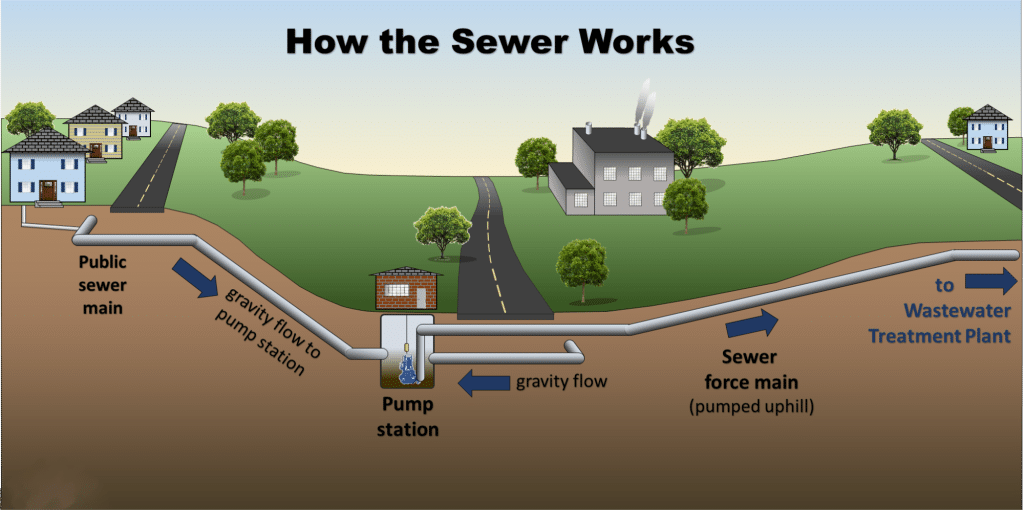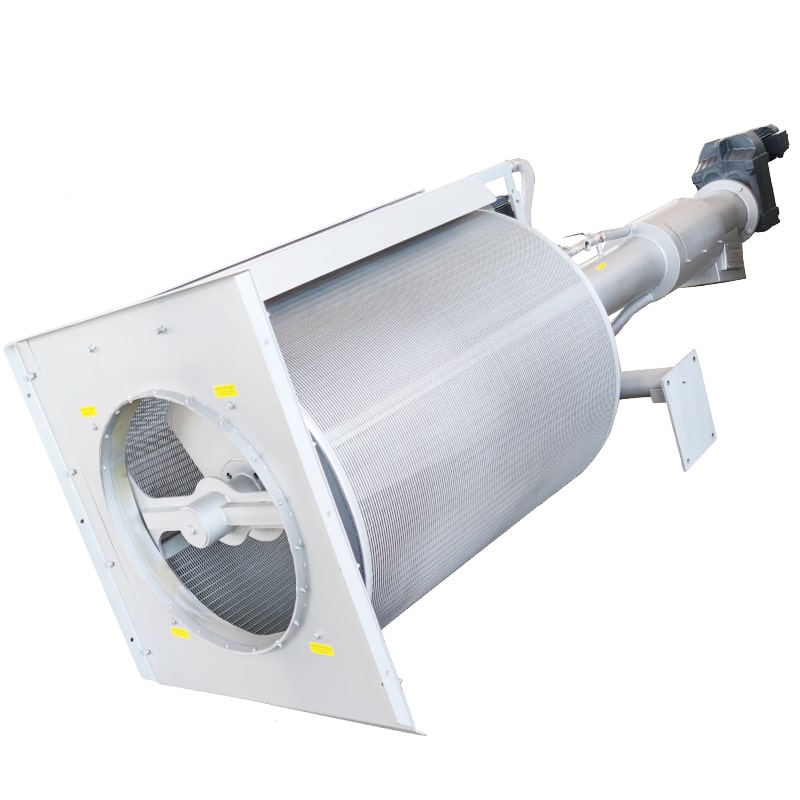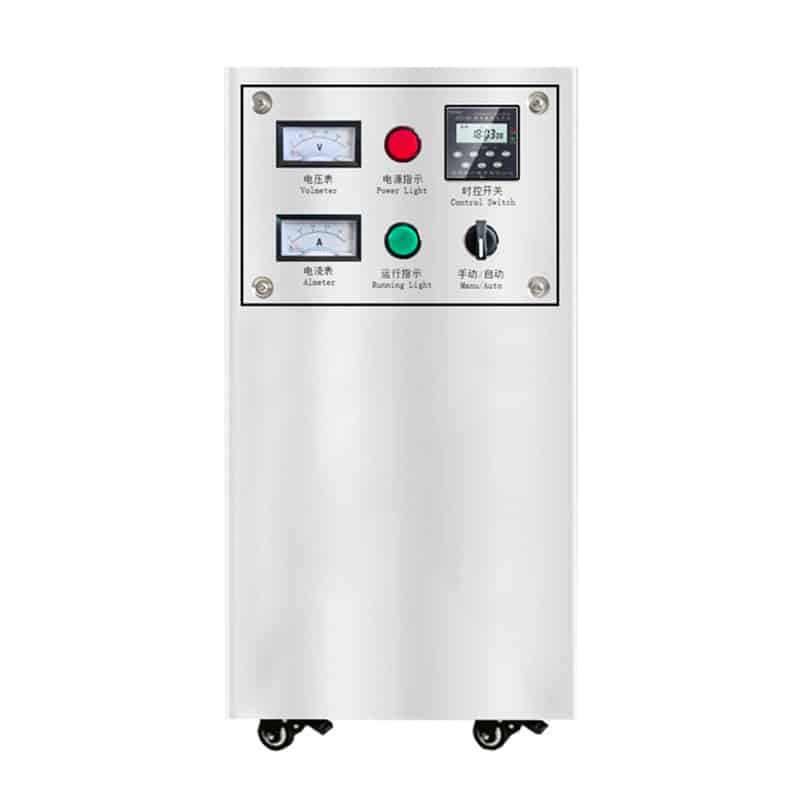Sewers are underground pipes that carry wastewater from residential, commercial, and industrial sources to treatment plants or treatment areas. Together, these sewer line types ensure that wastewater is properly managed and treated, preventing environmental pollution and protecting public health.
What are sewers?
Sewers are underground pipes or conduits designed to carry wastewater, including domestic sewage and industrial effluent, to a designated treatment or disposal location. These systems play a crucial role in urban sanitation by transporting used water away from homes, businesses, and industrial facilities. Sewers are a key component of municipal wastewater management infrastructure. They help prevent the contamination of water sources and promote public health by safely conveying and treating wastewater.
There are different types of sewers, including sewer lines that convey domestic and industrial wastewater, storm drains that manage stormwater runoff, and combined drainage systems that treat both domestic and stormwater flows. The design and construction of sewer systems vary depending on factors such as local regulations, population density, and geographic characteristics. Proper maintenance and regular inspections are required to ensure the functionality and integrity of the sewer network.
What are the types of sewers?
- Sewer pipelines: Used to convey domestic sewage and industrial wastewater. These pipes connect to residential, commercial, and industrial facilities and transport used water to wastewater treatment plants or other treatment facilities.
- Storm drains: Are used primarily to manage stormwater runoff. These pipes discharge stormwater from roads, roofs and other surfaces in urban and industrial areas to suitable locations to reduce flood risk.
- Integrated drainage system: This is a system that combines sewers and storm drains to treat both domestic wastewater and stormwater. Such a system helps to improve resource efficiency and mitigate environmental impacts.
The design and layout of these sewer types will vary depending on the size of the city, topographical features, and the requirements of environmental regulations. Together, they form an important part of the city’s infrastructure and play a vital role in maintaining public health and environmental health.
How do Sewer Systems Work?
Sewer systems are an important part of the city’s infrastructure, and their operating principles involve the collection, conveyance, and disposal of domestic sewage, stormwater, and other liquid wastes. The following are the operating principles of a general sewer system:
- Sewage Collection: The first step in a sewer system is the collection of domestic sewage, industrial wastewater, and commercial wastewater. This wastewater enters the sewer lines from building drainage systems, street outfalls, and other channels.
- Stormwater Collection: Also, the sewer system collects rainwater, usually through gutters, drains, and catch basins. This helps prevent rainwater from accumulating in the city and reduces the risk of flooding.
- Conveyance: Once wastewater and stormwater are collected, the sewer system conveys it to its destination, usually a wastewater treatment plant. Conveyance can be by gravity flow or by using pumping stations, depending on the topography and size of the city.
- Treatment: At a wastewater treatment plant, wastewater undergoes a series of treatment steps, including physical, chemical, and biological treatment, to remove pollutants, bacteria, and other harmful substances. The quality of the treated water is improved so that it can be more safely released into the natural environment or reused.
- Monitoring and Maintenance: Sewer systems require constant monitoring and maintenance to ensure proper functioning. This includes checking the condition of pipes, clearing blockages, maintaining pumping stations, etc.
- Environmental Protection: One of the goals of a sewer system is to protect the environment from pollution. By effectively treating wastewater and stormwater, the system helps reduce water pollution, prevent flooding, and maintain the public health of the city.

The design and management of sewerage systems need to take into account the specific needs of cities and environmental conditions to ensure their efficient and sustainable operation.
Different Types Of Treatment Plants For Sewers
Sewer water treatment usually goes through wastewater treatment plants. Sewage treatment plants can be categorized into different types depending on their size and treatment capacity, mainly including:
- Municipal wastewater treatment plant: Treats wastewater generated in residential, commercial and industrial areas of the city. These plants are usually large and capable of treating large volumes of wastewater.
- Industrial wastewater treatment plants: Treat specific wastewater generated in industrial areas. Because industrial wastewater may contain specific pollutants, effluent treatment plants often require customized treatment solutions.
- Rural wastewater treatment plants: Used for wastewater treatment in rural areas, they are relatively small in size and are adapted to the specific conditions of rural areas.
- Small decentralized treatment facilities: In special cases, such as remote or less populated areas, small decentralized treatment facilities can be used to treat wastewater locally.
- Reclaimed water treatment plants: In some places, efforts are made to convert wastewater into reclaimed water that can be reused, and such plants focus on improving the quality of the water to meet reuse standards.
Sewer Water Treatment Process
Pretreatment
Raw sweage initially passes through a mechanical screening process using bar screens or rotating drum screen to remove large objects from the water such as leaves, paper, granules, and plastics. The treated wastewater is dewatered in the first stage of treatment using a screw press which transports the waste to incineration for conversion into energy.


Primary treatment
Primary sedimentation tank: Wastewater enters the primary sedimentation tank, where it is treated with Clarifiers. Through gravity settling, solid particles settle to the bottom of the tank to form sludge. While the supernatant continues to flow to the next treatment stage. This is accomplished by static settling, whereas agitation equipment may be involved. The primary treatment helps to reduce the wastewater solids and thus reduces the turbidity of the water.
Biological Treatment
Bioreactor processor: Aeration of the aeration tank, by means of roots blower underneath, creates air bubbles through the water, producing a type of sludge called reflux sludge and activated sludge. Typically, this involves aeration tanks that provide enough oxygen for microorganisms to use. Aerobic digestion and anaerobic wastewater treatment can also be used for water treatment.

Air flotation machine: It mainly improves water quality by injecting tiny bubbles into the water and removing suspended solid particles or impurities such as oil and grease through buoyancy, its main purpose is solid-liquid separation.
In some older plants a biofilter/drip filter is added before the aeration tank.
Microbial attachment: A large community of microorganisms, including bacteria, archaea, fungi, and other microorganisms, is introduced into the bioreactor. These microorganisms attach to fixed supports, packing or biofilter media and form biofilms that provide attachment surfaces to break down organic matter in the wastewater.
Secondary Treatment
The effluent and most of the sludge enters into a secondary settling tank, which again goes through a settling process to remove the residual suspended matter and form more sludge. 85% of the organic matter in the water is removed.
Sterilize
Treated water may need to be disinfected to kill any remaining pathogens. This can be accomplished by adding chlorine or using UV disinfection equipment. Ozone generators can use ozone for disinfection.

Sometimes, adjusting the pH of the wastewater to meet discharge standards may require the addition of chemicals. Throughout the treatment process, water quality may be monitored to ensure that required discharge standards are met. Different treatment plants and regions may utilize different processes and equipment configurations.
Summary
Sewer systems are an important part of urban infrastructure and work by collecting, conveying and treating sewage, stormwater and other liquid waste. These different types of sewers are critical to maintaining public health and environmental health.
KUOSI offers a wide range of water treatment and disinfection equipment, as well as other water and wastewater treatment equipment such as filter presses, polymer preparation units, DAF units and more. Please feel free to contact us for equipment quotes or industry solutions.
